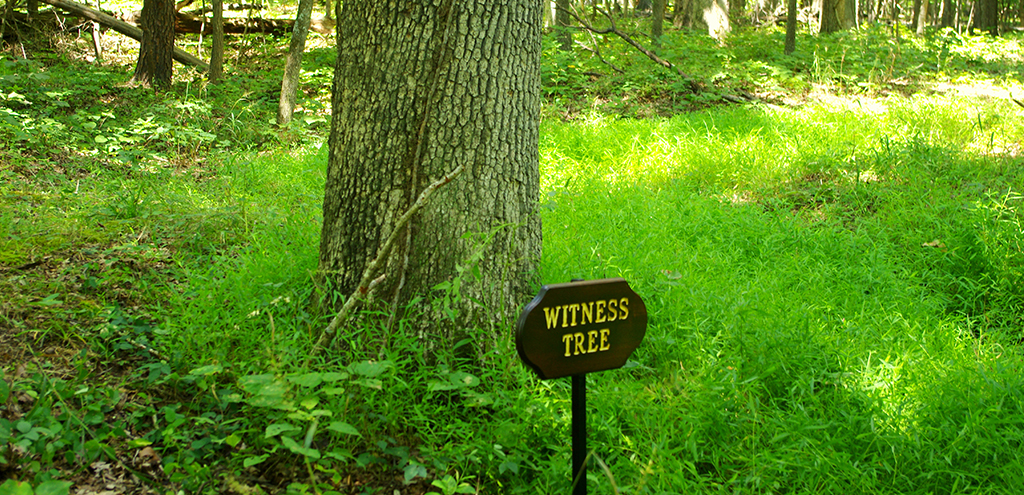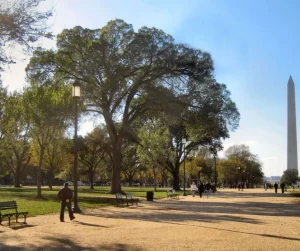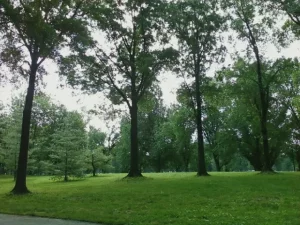THE LEAFLET

Witness Trees that are Living History
Washington DC has been known as the “City of Trees” for more than 100 years, and it’s clear to see why. Between our Districts’ floral treasures and the rich history that our nation’s capital is known for – it’s interesting to reflect on some of today’s old heritage trees that were once just growing saplings during major events that shaped our city and country’s history.
The National Park Service (NPS) defines “Witness Trees” as silent sentinels of storied landscapes that help connect people, history, and places. They experience important events in American history and remain part of our nation’s cultural legacy. A sector of NPS even initiated the Witness Tree Protection Program to identify and document historically and biologically significant trees in the greater Washington, DC area. Each of these trees has special characteristics that make it nationally significant.
A few of the recognized Witness trees in the DMV area include:

Photo Courtesy of NPS
Andrew Jackson magnolia trees
In 1829 President Andrew Jackson planted Magnolia trees in memory of his late wife Rachel. Magnolias were her favorite trees, so the president brought saplings from his home, the Hermitage in Tennessee, and planted them to remember her. Today, they are the oldest presidentially planted trees on the White House grounds. Poised, stout, and strong, they are such a presence that they are depicted on the back of the old $20 bill.
The Southern Magnolia is an elegant tree has large fragrant flowers that bloom from March to June, striking seed pods that drop bright red seeds in the fall, and bold, beautiful leaves. Southern magnolias are a much sought-after, durable evergreen tree that grace gardens and yards throughout the District. This tree is available through our residential planting program, RiverSmart Homes. You can also get up to $100 back for planting this tree yourself through our tree rebate program.

Photo Courtesy of NPS
Jefferson Elm
In 1935, 333 American elms were planted along the north and south edges of the Mall in four parallel rows, and while many of the original elms planted during that time have died and been replaced – the Jefferson Elm, north of the Smithsonian Freer Gallery, and its fellow survivors recall the time when L’Enfant’s 1791 vision for a tree-lined mall was finally realized.
A beautiful shade tree that once graced cities and towns nationwide, the American elm was devastated by Dutch elm disease from the 1950s – on. Fortunately, disease-resistant strains are now available, and the elm can again be enjoyed for its elegant vase-shaped crown, distinct saw-toothed leaves, yellow fall foliage, and its ability to thrive in tough urban environments. You can get up to $100 back for planting this tree yourself through our tree rebate program.

Photo Courtesy of NPS
Circle of Willow Oak trees – South of the Vietnam Women’s Memorial
It has been suggested that a circle of Willow Oaks was planted in the 1920s encircling a picnic area along the north side, and west end of the Reflecting Pool. Its location is currently south of the Vietnam Women’s Memorial. They’ve been there to witness the creation of Constitution Gardens in 1976 and the Vietnam Veterans Memorial progression and addition of statues from 1982 to 2004.
Named for its unusual leaves resembling those of a willow tree, the willow oak is one of the toughest urban shade trees around. Its tiny acorns are prized by wildlife, and its strong, straight trunk makes it a welcome tree in any yard. You can get up to $100 back for planting this tree yourself through our tree rebate program.
Lastly, a community-proclaimed witness tree-

Photo courtesy of @Ward8Well on Instagram
American Sycamore “Mimi” at the Well at Oxon Run
“Mimi”, as she’s known to those who frequent the Well, is a beautiful old American Sycamore tree. Although the tree has been damaged in the past, possibly from lightning, she continues to sprout new growths and branches from her solid trunk. Standing over the area of Oxon Run for generations now, Mimi has been able to witness the community grow through both hardships and successes. Most recently, Mimi has been able to watch the Well expand and thrive into what it is today.
The American sycamore is a tough, wide-canopied tree that will provide plenty of shade in the summer. Its signature brown bark exfoliates to reveal creamy whiter inner bark that can be seen from a great distance. Typically growing to its largest size along rivers and streams, this tree is highly resistant to pollution, salty soils, and other urban stressors. You can get up to $100 back for planting this tree yourself through our tree rebate program.